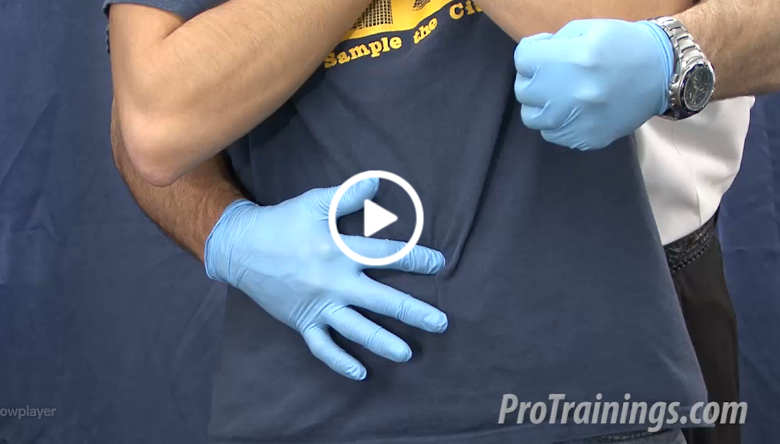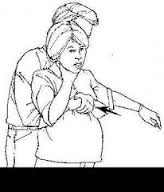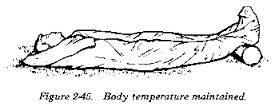In this final video of 2013, I wanted to quickly summarize the 25 different topic episodes and share a New Year blessing with all you Rescue Fans!
Happy New Year!
In this final video of 2013, I wanted to quickly summarize the 25 different topic episodes and share a New Year blessing with all you Rescue Fans!
Happy New Year!

Heimlich procedure and if it’s okay to do it on a person who may have recently had a surgery on their back. The quick answer is YES! If you think about it, what’s more dangerous, the Heimlich on a sore back or letting the person die from a blocked airway? I wanted to take a couple minutes and answer this question directly and I hope it helps.
In this episode I revisit an annual subject that can never be taken too lightly. Safe driving in winter snow and ice. Too many times people follow too closely and don’t leave enough room to evade a crash or to stop at an intersection. If you want to be prepared to survive this winter’s icy driving, be sure to watch this episode of RoyOnRescue and learn what RoyOnRescue is preparing for the new year!
Hello again rescue fans!
In this episode, I dig into a subject that is sure to cause controversy. But…for those who know me, when have I ever steered clear from that? So, after being made aware of a situation where a mother was forced to sign a waiver that stated something to the effect, “I understand that by not getting my children vaccinated with the flu shot, I am endangering society…blah…blah, etc.”. This caused me to be a little curious about what all this unreasonable pressure is about in getting the flu shot. Is it really that good? Is it really that effective? Is it really that safe? I mean, since when has an epidemic every been prevented by a flu shot? The last flu pandemic was in like 1969 but it still was not like the one in 1918! And since then, we suddenly think that in 2008 we should be developing a flu vaccine to save countless lives? Well, this would all be fine and well if we didn’t have to worry about potentially dangerous substances found in the medium of the vaccine. In fact, more and more reliable research is being uncovered all the time about the potential risks of vaccinations that contain toxic substances like Thimerosal which is a mercury derivative and a highly toxic heavy metal and a carcinogenic called Polysorbate 80 (also known as Tween 80): Generally contaminated with the carcinogen 1,4-dioxane. Not to mention the possible side effects of allergies, asthma and autism linked to the adjuvant. So, before you take the plunge, I think it’s a good idea to do your own research, find credible websites including the CDC itself and look at the real research to see if the risk of injecting these chemicals are really worth the possible but not guaranteed benefits of getting the flu shot. I hope it helps.
I was sent a tweet from our friends across the Ocean who are involved in rescue. It appears that a teenager was washed out to sea and the brave men and women who make up the UK Coast Guard, risked their lives to try and save this child. Regardless the outcome, I wanted to thank them personally by featuring their rescue video.
God bless you all!
Roy
It’s been a while since my last post but I wanted to get back into the swing of things with something practical, helpful and that some of you may be experiencing as we speak!
Sore throat. If you’ve ever wondered if your sore throat was serious and needed to be seen by a doctor, check out this episode to help educate yourself and answer that question.
Stay well and keep on rescuing!
I received an email from a caregiver who was asking if I could do a bit more training on the care of a 15 month old with a trach. I did find a couple videos that were pretty good for cleaning and changing a tracheostomy tube but not really how to deal with ventilation assistance. I thought I’d at least take a few video bytes and maybe add some tips and thoughts about what to do if you have O2, bag valve mask and a suction unit. Hope it helps.
Hi Rescue Fans!
Got a good question via email today regarding the choking adult scenario. This rescuer asked if we could explain the following: “Please talk about how to give a pregnant woman chest compressions if she was choking. How would we hold her? With an infant we make sure the head is below the body. But what to do for a pregnant woman who is choking? -H____
I thought this was a good question and one that we cover in our CPR certification course. Feel free to view it below. At about 44 seconds into the training, I talk about what to do if the person has a distended abdomen that’s too large to reach around, or they are a pregnant person. I hope this helps!
Hello Rescue Fans!
In this unedited video, I talk about and explain why we cover a patient who may be showing signs of shock after this question came in by ema il. Remember, it’s important to help the patient feel comfortable, cared for, and safe as best as possible. But physiologically speaking…keeping the patient warm helps prevent hypothermia “which shifts the oxyhemoglobin dissociation curve to the left, impairs oxygen delivery, and exacerbates the shock state.”(http://www.ebmedicine.net/topics.php?paction=showTopicSeg&topic_id=110&seg_id=2113) And in the end, the fact that the person feels well cared for can help them become less anxious and do better through the traumatic event. Hope this helps.
il. Remember, it’s important to help the patient feel comfortable, cared for, and safe as best as possible. But physiologically speaking…keeping the patient warm helps prevent hypothermia “which shifts the oxyhemoglobin dissociation curve to the left, impairs oxygen delivery, and exacerbates the shock state.”(http://www.ebmedicine.net/topics.php?paction=showTopicSeg&topic_id=110&seg_id=2113) And in the end, the fact that the person feels well cared for can help them become less anxious and do better through the traumatic event. Hope this helps.
I received a question via email about using an adult AED on a pediatric patient if there were no pediatric AED pads available. The quick answer? Yes, you can. Remember, many newer AED’s are now attenuated and will usually give as much electricity as needed to accomplish de-fibrillation. If at all possible, use an AED with pediatric pads and place them correctly on the chest and back of the pediatric patient. If no pediatric pads are available, place the adult size AED pads on the front center of chest and in the middle of the child’s back approximately between the shoulder blades to ensure most effective de-fibrillation even with adult AED. In the end, when a person is suffering sudden cardiac arrest, the majority of the time, they are in a some form of de-fibrillatable rythm and an AED is of great benefit, even if the size of the pads don’t match. Ages for the child ranges between 1-8 or first signs of puberty, after that, treat as an adult and if under 1 year of age, treat as an infant. There’s some question as to the effectiveness of de-fibrillation in infants under 1 year. See the above links for more details regarding this subject.
I hope this helps.
Keep On Rescuing!